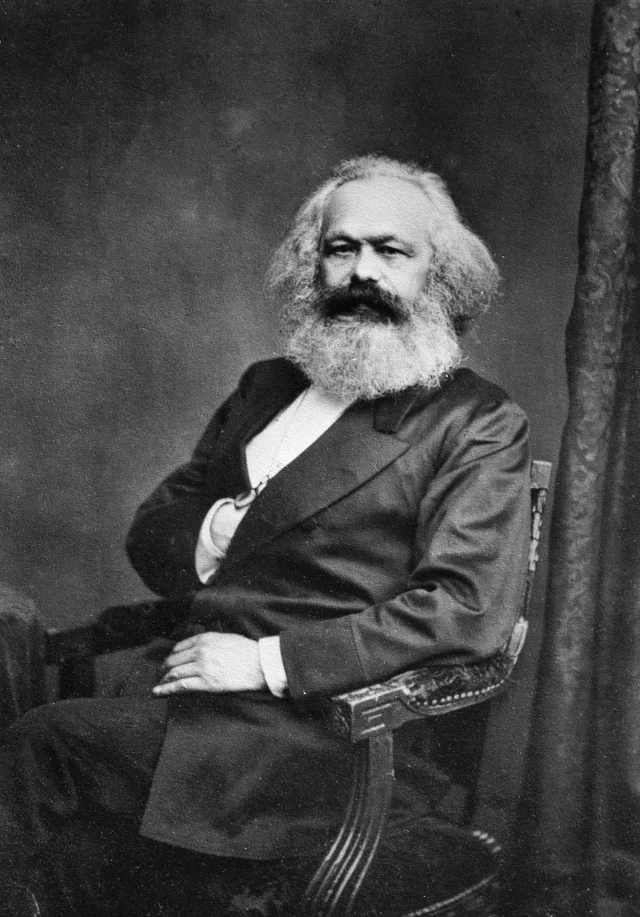Why do we celebrate May 1?

Karl Marx and Frederich Engels,the two German intellectuals produced an epoch-making short publication in 1848. Yes, I am referring to The Communist Manifesto. The two have written many books both as a duo and by themselves such as Das Kapital and Anti-Duhring, but the Communist Manifesto is what really shook the world.
They deduced from their studies that society has always gone through what they define as the “class struggle,” and that the means of production was the key to developing the economy and society at large. They have classified the two contending groups in the class struggle as the Bourgeoisie and the Proletariat, better understood as the Haves and Have-nots. They observed that the Bourgeoisie had control over the means of production and thus minted fortune through the exploitation of the hard labour of the Proletariat.
Marx and Engels' aim was to create a classless society where the Proletariat would be much stronger than the Bourgeoisie. The ruling classes and their protectors (governments, mostly empires or kingdoms back then) will not give way easily, so they were essentially usurped through revolutions. Both the thinkers were of the opinion that the sweat and hard toil of the proletariat would build strong economies which formed the basis of civilizations.
The Communist Manifesto concluded with a clarion call to all the workers of the world to rise, go forth, and siege the means of production and state power. The proletariat had nothing but their shackles to lose but the whole world to conquer. It may have sounded improbable in 1848 but it happened within 69 years. The Communist Party, representing the working class proletariat, seized power in Tsarist Russia in 1917 and the first Socialist country came into being which soon became the USSR.
Throughout the world, International Labour Day, or International Workers Day, is celebrated on May 1 -- a day of solidarity towards the working class. To know how and why this day was selected and what its significance is, we have to study some history. The exploitation of the have-nots by the wealthier class was there since time immemorial. The weaker people had to work for the wealthy and there were no checks and balances in place to ensure that the workers were not exploited. In the modern age when agrarian societies were slowly transforming themselves, production units had to be planned due to the rise of technology and industry.
The Communist Manifesto concluded with a clarion call to all the workers of the world to rise, go forth, and siege the means of production and state power
Capitalism was born in the lap of colonialism, and the two systems supplemented each other. There existed an almost master-slave relationship between the bourgeois owners and their workers, and the ensuing exploitation was inhumane. Workers had to work up to 12-14 hours a day with dismal salaries with which they could barely afford even a relatively modest livelihood. In the 19th century, the industrial revolution brought about miraculous changes as production increased to a great extent. Unfortunately, conditions for workers did not change at all. Rather, at places the exploitation by the bourgeois class increased.
The owners were organized and they had state power on their side, whereas the workers were huge in numbers but were not organized. They were unhappy and agitated upon seeing their masters making fortunes at the cost of their hard labour, whilst they starved and had to live unhealthy lives in shanties.
In 1817 Robert Owen, a Scottish industrialist and philanthropist, proposed that the industrial worker's day be divided into three equal segments: Eight hours each will be allocated for labour, recreation, and rest. Workers had been demanding an eight-hour working day for a long time by that point. With Owen's proposal the demand for eight-hour shifts started growing amongst workers. The working class had logical yet simple demands, they wanted an 8 hour working day, a comfortable pay package, and improved living conditions. Their employers were in no mood to agree, naturally. To press forward their demands,the workers had to organize themselves and unite.
 Karl Marx. Photo: Wikimedia Commons
Karl Marx. Photo: Wikimedia Commons
In 1864 Karl Marx and Frederich Engels formed the International Workingmen's Association (also known as the First International) to give the working class a platform to fight for their demands. This platform attempted to organize workers in Europe, the hot bed of Capitalism, and fought for their reasonable demands, especially the eight-hour working day.
In the progression of the struggle, a big bang came in 1886. The American Federation of Labour -- which was in touch with the First International -- called for a general strike of workers in Chicago on May 1. The huge rally of workers, planned to be brought out in support of the workmen's demand of an eight-hour work day, was foiled by the police force. The workers were agitated and they were demonstrating everyday since May 1 in support of their demands.
On May 4, the workers congregated near the Chicago Haymarket to bring out a massive procession, but the capitalist factory owners would not let it happen. They connived with the city authorities and organized a big contingent of law enforcement nearby to suppress the workers' agitation. Unfortunately, a bomb blast occurred in the police position, and the identity of who set it off was never made clear. But the damage had already been done. The police fired into the workers' assembly, and street skirmishes ensued -- 11 lives were lost and about 150 were injured.
"In 1864 Karl Marx and Frederich Engels formed the International Workingmen's Association"
Since then, every year, big demonstrations were organized to keep the fight for an eight-hour day alive. In 1889 the Second International was formed and more coordination amongst the proletariat from different countries was in place. The inaugural conference decided to commemorate the Haymarket tragedy on May 1 every year and press forward the demand for an eight-hour working day. The workers’ movement grew.
In the 6th Congress of Second International held at Amsterdam in 1904, it was decided that May 1 would be observed as International Workers Day in all countries by the workers, their unions, labour parties,and their sympathizers.On thisday all the workers worldwide would demonstrate energetically and put forward a strong demand for the eight-hour working day. Since the day became International, momentum was gained and the demand started gathering strength.
Soon the first World War started and, for the time being, the worker's movement had to take a backseat. But towards the end of the war, Tsarist Russia walked out of the war,and a revolution took place under the leadership of Communist Party led by Lenin. The proletariat was in state power and an eight-hour work day was adopted immediately.
After the war ended in 1918, the International Labour Organization was formed in 1919 to ensure social justice in the means of production. ILO had representation from states, owners, workers, and specialists. Soon, in 1920, the ILO established the eight-hour work day for all production units in the world.
Most countries have cemented May 1 as Labour Day or International Workers Day, while certain countries have their own Labour Day commemorating some local labour related issues.
Since the medieval era, it is the day when Europeans celebrate the advent of spring. By May flowers start blooming and the weather is pleasant. It is midway between Spring and Summer and a very comfortable time for the Spring festival. May Day had been observed as a spring festival up until the beginning of the 20th century. But now it is more of a day of festivities, commitment towards the future, and looking back at just how far the labour movement has come.











